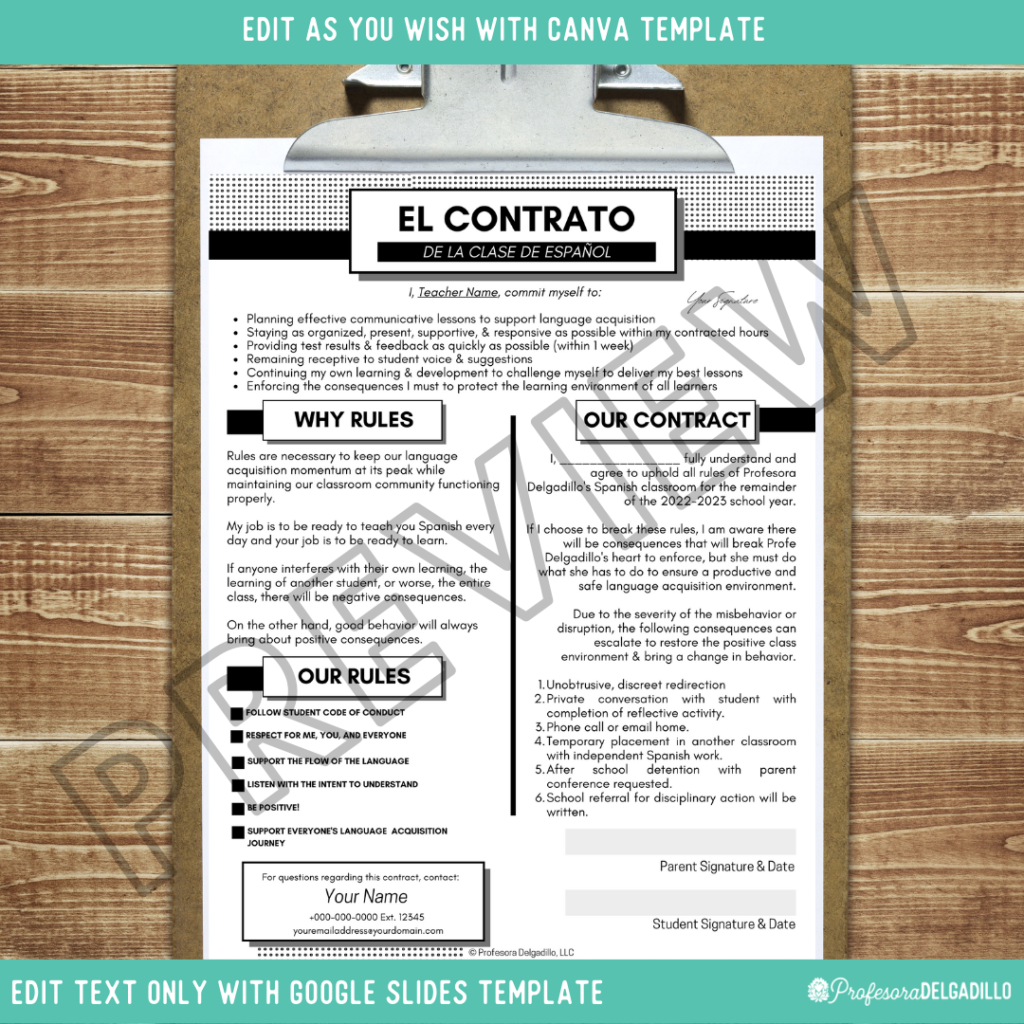We are normally so focused on the plans and challenges we have ahead of us as teachers that we forget that LITTLE things & TINY actions can have a great impact in our lives.
Growing up as an undocumented teen, I was conditioned to become a workaholic because if I wanted to achieve my dream of going to college, in my teenage head, I needed to prove so many things to so many people. Don’t get me wrong, the extra hard work has paid off. Yet, this excessive need to work also transferred to my professional life as an adult. I won’t go into the details because I could write a book about this, but I mention this because my hard working nature has been taking toll on my health for the last years.
First, I came crumbling with anxiety shortly after the pandemic (you can read about that here), and this past May, I was diagnosed with pre-diabetes and hypertension.
I don’t have a problem sharing so much of me because I know many educators will relate. I can identify many colleagues who suffer from many of these things.
The truth of the matter is that if we don’t make time to take care of ourselves, our bodies will send us signals that we will ignore until they become sickness, often chronic. I don’t want that to happen to you too.
So, here are some things that I have done since anxiety first hit my door and new things I am adding to make sure I keep my sanity this year while I continue to take back my time.
Feel free to take one idea or use all of them. Not everything will work for everyone and that is okay.
Tips to Minimize Grading
Students always want to know if something is for a grade. If they know it is for a grade, they are likelier to do the activity/task/etc.
However, what they are really asking for is accountability. You can keep learners accountable without collecting stacks of papers. I remember I used to collect all papers and though I knew I wasn’t going to grade all, the amount of documents was overwhelming.
Years ago, I read the book Teach Like a Champion by Doug Lemov. Also, my district conducted training on concepts and ideas from this book, and it helped me change so many things about the way I was doing things.
One strategy is called EVERYBODY WRITES. With this technique, you provide learners with a few minutes to write down their answers before calling on learners. This also provides students with more thinking time, which we often don’t grant enough.
This can be done on paper, but I personally have learners do it on dry-erase boards. Why? Because I can still keep them accountable by calling on a few learners to share their answers/thoughts and at the end, I tell all my learners “ENSÉÑAME” so they can all show me their boards.
See the video below if you would like to hear more about this.
Bringing small individual dry erase boards to my classroom has minimized my grading greatly while still allowing me to obtain the data I need about my learners’ progress along with keeping them accountable.
As with everything else, once you bring these dry erase boards to your classroom, you will make one small change that will grow into a habit over time, and that is asking yourself before having learners doing any activity “Could this be done in a dry erase board? Why or why not?” Then, make your decision.
In my class, we write a lot on paper, processing sheets, but we also write a lot on dry erase boards daily.
Tips to Increase Student Participation
Don’t you hate it when you ask the class a question and there are crickets? I absolutely do not like it, but during the first two weeks of school, I call a student from previous years with pretty handwriting (this is because I have terrible handwriting myself, otherwise I would do my own) to come and help me make my equity sticks.
Equity sticks are popsicle sticks in which every student’s name is written. This way, we will establish a culture of random call calling where every learner will have a chance to participate. See the video below for more about equity sticks.
I still jump into class and ask questions and ask for volunteers, and after a while, I get volunteers more often, but if there are ever crickets, after I play the cricket sound on my noise maker or soundboard, I jokingly say ¿voluntarios o víctimas? which I saw a teacher from my district do at a training a few years ago.
A super plus about having these equity sticks ready is that you will save so much energy when you try to do grouping, whether random or strategic. I cannot tell you how many times I have pulled some pretty good groups very quickly thanks to these sticks.
Tips to Minimize Common Misbehaviors
To minimize stress, even if you have the best classes, I have found that classroom contracts work wonderfully, not to mention that this promotes all the SEL competencies, particularly self-management and responsible decision-making.
Additionally, having a contract will allow for a discussion with your learners as you present it and it will send the message to students and parents that you have a strong classroom management system in place. I do ask learners to talk about this documents with parents at home and I require the student and parent to sign these.
This is what my behavior contract looks like:
I had already blogged about this with a bit more detail, and you can read that blog at this link.
Also, you can hear me talk about how I had stopped using a contract until I needed it again years later. Now, I use it with every class.
One thing I will say, if you buy the contract from my store or make your own, but you don’t follow through, might as well not have purchased it or created it because it won’t change a thing.
This contract only works if we commit to following through with consequences when necessary.
Tips to Minimize Planning Time
Let’s talk about planning for a few minutes. I don’t know why it took me so long to semi get my ducks in a row.
Thankfully I have several systems in place to save me time and energy so I can enjoy my weekends and devote my time after school to my doctoral program, myself, or my family. Getting sick these last years has pushed me to find ways to simplify my teaching without sacrificing student engagement or effectiveness.
One of how I do this is by having a MONDAY routine. This is my Monday routine:
- SEL Check (created by me, which you can get free)
- Weekend Chat (with Bethany Drew’s free template)
- Calendar Talk (with Claudia Elliott’s templates)
- 1 Special Person Interview (which I learned from Bryce Hedstrom)
- Write & Discuss (which I learned from Mike Peto)
- Comprehension check game (from Sra. Chase & Meredith White’s free templates)
- Introduce new unit or continue with unit from last week.
For the rest of the week, I only think of a DO NOW if I want to, but if I don’t, I simply do an SEL check. It has pay high dividends over the past years. In the following video, I explain a bit more about using SEL checks as Do Nows.
Minimize Planning Time with Artificial Intelligence in Spanish Class
I will be blogging more about AI in the classroom soon. Ever since Chat GPT launched, I have caught the fever, and if you have been following me for a while, you already know what that means, as in the past years I have caught the Jamboard Fever, the Hexagonal Thinking Fever, and now the AI fever, so I will be blogging more on that later.
Right now, I just want to share some quick ways in which you can save time with AI tools.
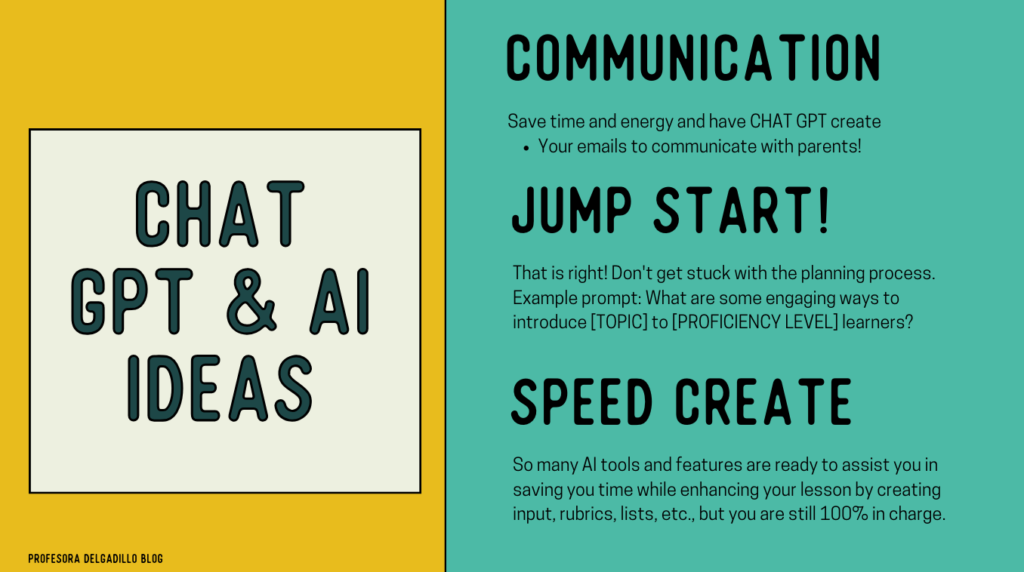
How does it work?
- You get a free account from CHATGPT today.
- You type your request, prompt. The more specific, the better. You can even tell it in which tone or for which age groups you want your results to be crafted.
- Watch the magic happen.
- Review (because ChatGPT can have biases) and modify as you wish.
The following are some requests of things I have told ChatGPT to do for me:
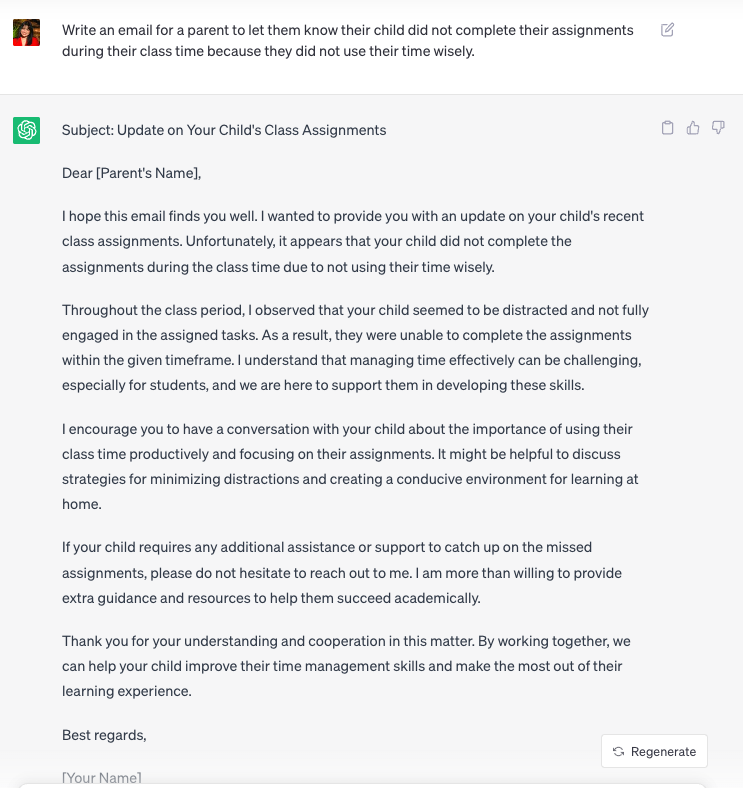
Example 1
In the example above, I got my result. Personally, I would not write such a formal email but I can use parts or tweak until I have something that sounds a lot more like my communication style. Though it is not ready for me to use it as is, it is saving me mental bandwidth, specially if I am to write a note at the end of the school day. I am still in charge of crafting this email and adding my own voice to it, but I got a head start for sure.
Example 2
In the following example, I have copied and pasted an article I found via a Google search in an online newspaper. This article was intended to be used with my AP Spanish class.
First, I asked Chat GPT to create multiple choice questions for me (picture not shown thought the questions were great) in AP Spanish style and I also asked it to provide the answer key.
To support my learners, I also requested ChatGPT to write a glossary for uncommon vocabulary. See the results!
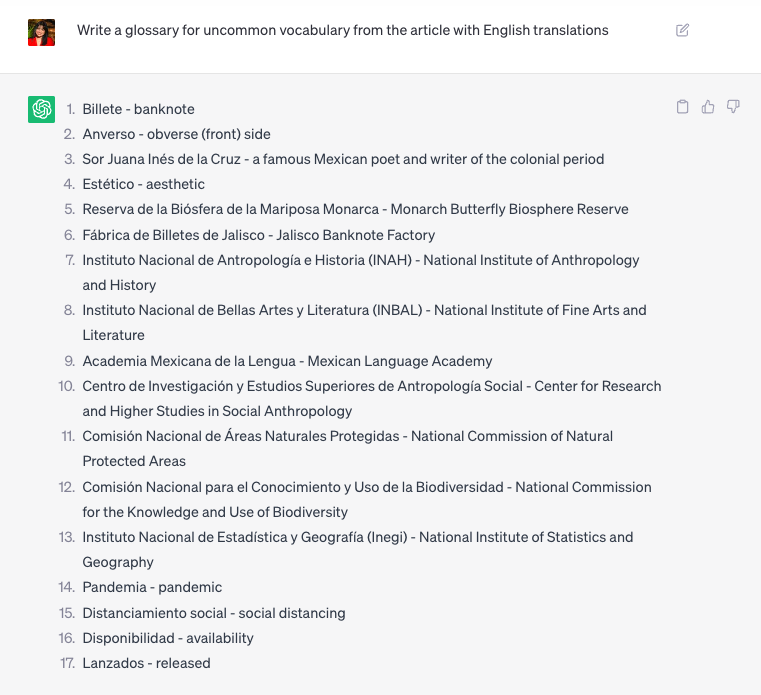
Finally, I requested the following:
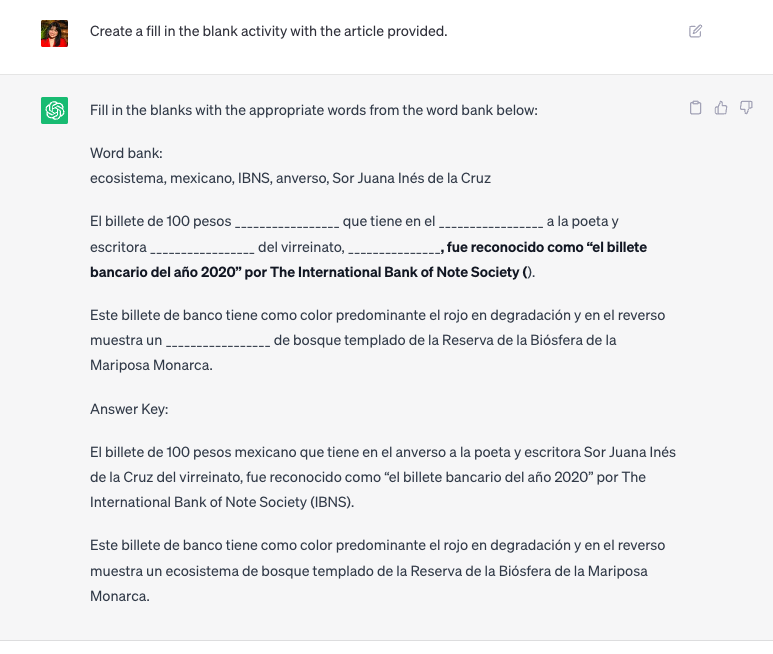
It is important to always inspect Chat GPT results carefully. There are flaws with it, but it an extremely useful tool for any teacher wanting to save time and to enhance lessons.
Here is the best part, Chat GPT is just ONE AI resource for teachers, but there so many more that can help you:
- Generate images from imagination
- Generate lessons on specific topics with slides and activities
- Generate discussions with support and ready to use prompts
- Create assessments and questions for games like Kahoot! Gimkit, etc.
- Create video transcripts of videos in the target language and create activities with such transcripts.
- Provide feedback as some platforms like Formative are adding that feature!
- and much more!
If you want to learn more about AI tools specific to the language classroom, my friend Rachel Lucas from Tech for World Language Teachers is offering an early bird special for her course Must-Have AI Tech Tools for World Language Teachers!
This course has a promise: to help you save major planning time with AI. So, if this is something of interest to you. Check it out!
If you are still on the fence about integrating AI, make sure you are following me on social media (you can see my social media icons on the top right of this blog post) as I will be sharing my takeaways and experiences with AI in these next few months.
Also, I will be coming up with a PART 2 blog post on tips to save time and energy in your Spanish classes.
Liked this blog post? Please support me by sharing it with your friends and colleagues!
Until next blog post.
***This blog post may contain more than one affiliate link. I will earn a commission if you choose to make a purchase at no extra cost to you. Remember, I only recommend what I love/believe in. Also, if you make a purchase from my link, I will be forever grateful to you as this will help me fund my doctoral program in the upcoming three years. Thank you!


